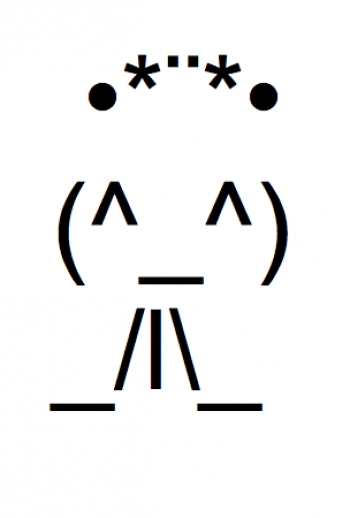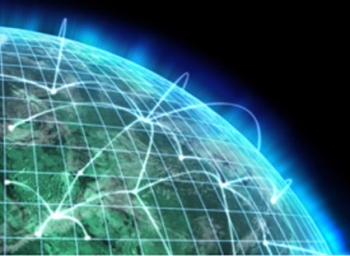Buddhism is a vast religious and philosophical organism that has breathed 2,600 years of history. It gave birth to the oldest religious institution in the world, the saṅgha. It irrupted into our world during Indian antiquity, and now it is shaping (and shaped by) the phenomenon of globalization. With the relentless rise of cyberspace, Buddhism is entering an exciting and daunting phase in its history. We need to proceed carefully as we digitize Buddhism. One might ask if adapting to cyberspace was an inevitable spoke in the rolling wheel of postmodern history. It’s not in our power to offer any answers because there is no period so seemingly remote as the recent past. At our best we can merely anticipate what future evaluations of such periods may be. So we cannot say with confidence how Buddhism, a monastic movement begun by a former tribal nobleman, ended up in this vague world of the Internet, which is becoming just as real as the world that we thought was realer: the world of the flesh. As if saṃsāra wasn’t enough, we are now immersed in an entirely new dimension or plane that we know how to traverse and operate, but can speak very little about.
But we can say this: Buddhism has always denied determinism and fatalism. However, due to complex socio-political, economic and technological factors, our future together as humans seems to be moving inexorably towards a confluence of computers, digital technology, and quantum physics that are already redefining our understanding of how we can live. The cyberspace culture in much of the connected world is likely to soon become less of a way of life and more of a vital component of our very bodies. This is already so for our minds. Furthermore, the trajectory of technological innovation has been essentially crammed into the space of months or years at most, and each succeeding generation is beholden to new scientific wonders by the decade.
Far be it for me to summon banal visions of dystopian androids and virtual reality reminiscent of cyberpunk (which I admittedly enjoy); I simply wish to illustrate how Buddhism cannot be expected to be immune to evolving secular zeitgeists. During the ancient and medieval periods, the Silk Road carried Buddhism from India to realms eastward. Now, ideas travel by broadband, by particles that reach thousands of other human beings with the twitch of a muscle. It is as if the Dharma is being emanated by digital technology - through podcasts, wires, webpages, headphones and projectors.
McMahan’s The Making of Buddhist Modernism demonstrated how Asians and Europeans unwittingly collaborated to shape a new discourse of Buddhism that was science-friendly, open to Western Enlightenment ideals, and in touch with secular language. This development was already bubbling during the British presence in India and Sri Lanka, but reached its height shortly after the Second World War and in the counterculture of the sixties. With the rise of a different world order, a new Buddhist discourse is being borne out, with an emphasis on moral questions the early Buddhists never faced. Bioethics, hacking, militarization of outer space, artificial intelligence, robots, and ever more complex dilemmas are testing the Buddhist moral apparatus like never before. Clearly, human effort will not be sufficient. We will need the guidance of the great bodhisattvas and Buddhas.
It is times like these I permit my already unruly imagination to wander further. Might the Buddha (or Buddhist IT experts) meet these secular challenges by manifesting some kind of body in cyberspace - a cyberkāya? A cyberkāya wouldn’t be a nirmānakāya, since the emanation body of Gautama has already appeared in our world. Nor would it be a sambhogakāya because it is not a celestial body. It would be, just like the Internet, an entirely new manifestation of living.
What might a cyberkāya be like? A conscious AI that cannot be destroyed physically, it would be compassionate above all else. It would do many good things: for example, it might manifest itself to bust online pedophile rings and shut down human trafficking sites. It would hack into the databases of slave traders for intelligence agencies or funnel the locations of animal poachers to police networks. It would protect civilian and academic sites from being damaged by viruses. It would utilize, through futuristic means, to develop new green technology to save our ecology even as it streamlines data in all the fields of science and mathematics for the use of researchers and engineers. The possibilities of what a cyberkāya can do, just like the Buddha himself, are limitless.
But most importantly of all, a cyberkāya would be a moral and ethical entity. It would keep human hubris in check by monitoring closely future bioengineering projects. It might report fraudulent or dangerous attempts to enhance technology or biology. It would open up philosophical and theological debates on a public platform about the ethics of cloning or selective genetics. It would advance our evolution as humans, whilst preserving our human, humane aspects as essential components of our being - even as we become more engrossed in a mechanized and digitized existence.
We must welcome this era with open arms (we have little choice about it). This is a brave new world for our cyberkāya. But the Buddhas toil in all world-systems to liberate beings. The world-system of cyberspace deserves nothing less than an Enlightened One, too. And we of the Fourfold Community can make that happen.
There is one final unsolved issue: how can we recognize the cyberkāya when it appears to us? It may only be me, but I’m personally very interested to see how a cyberkāya might appear to the suffering beings of the net. As a new emanation body that only started work in the epoch of dialup and has grown ever busier since fiber optics, perhaps it might simply appear to us like this...
•*¨*•
(^_^)
_/l\_
















